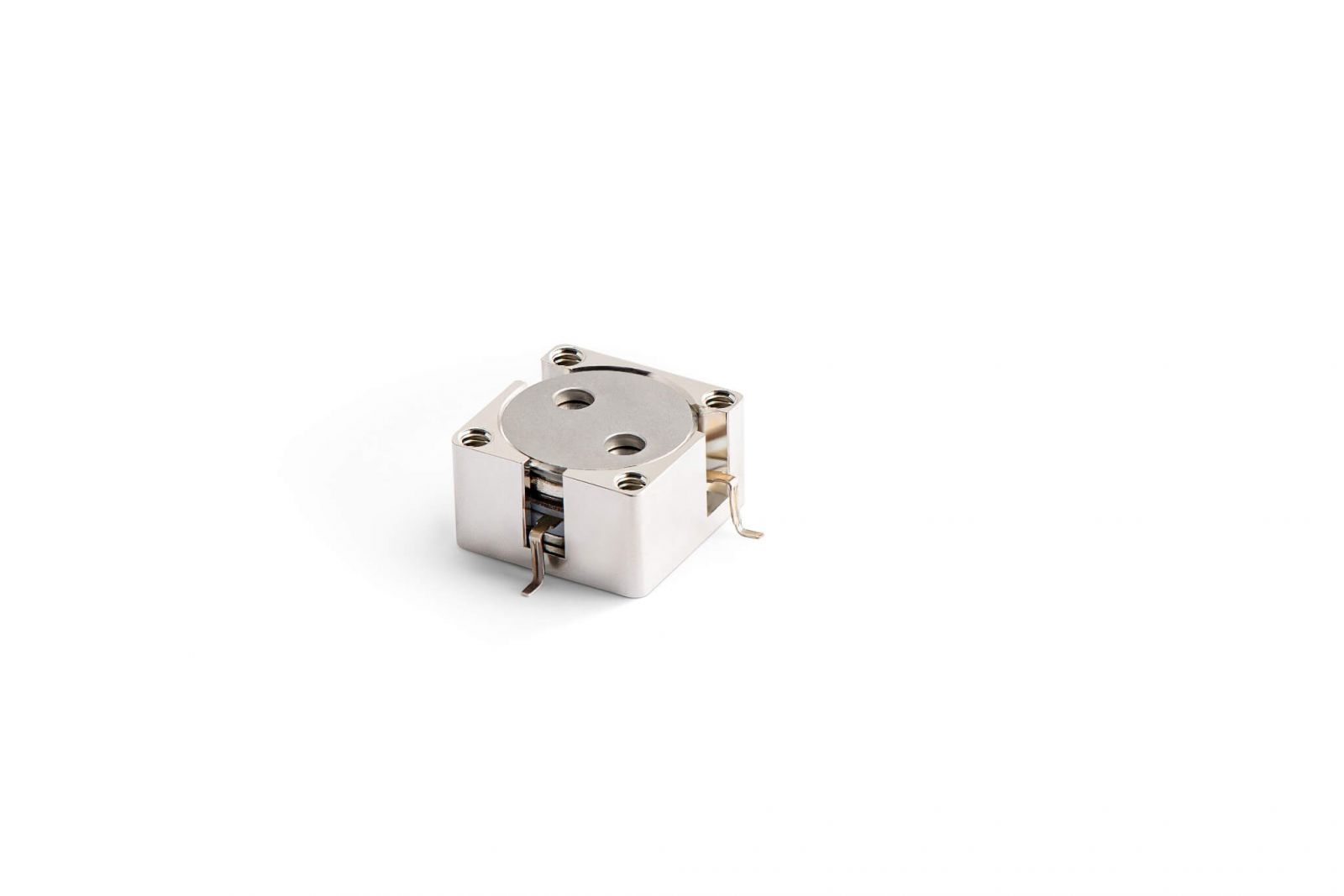- About us
- Product
- Dual-Junction Circulator
-

Dual-junction Microstrip Circulator
-

Dual-junction Drop-in Circulator
-

Dual-junction Coaxial Circulator
- Customized
- Technical Note
- News
- Contact us
Updated on:
Keywords: drop-in RF circulator manufacturer, RF circulator supplier, drop-in circulator China, microwave circulator factory, ferrite circulator, HzBeat RF components, radar SatCom 5G
High‑performance, compact solutions for L/S/C/X/Ku/Ka‑band radar, SatCom, and microwave subsystems.
Drop‑in RF circulators are non‑reciprocal, three‑port devices that route energy directionally and shield sensitive components from reflected power. Their compact footprint and robust thermal path make them the preferred choice in front‑end modules, high‑density T/R units, and rugged field systems. In this technical brief, we unpack the design trade‑offs, material choices, S‑parameter behavior, thermal considerations, and reliability methodologies that separate commodity parts from mission‑grade components.


A drop‑in circulator integrates a ferrite resonator and a permanent‑magnet bias in a metal housing that “drops” into a cavity or carrier and fastens with screws. Electrical connection is typically realized via pins, tabs, or spring contacts that mate to a PCB or ceramic substrate. Compared with connectorized coaxial formats, drop‑ins cut out excess interconnects, reduce mismatch loss, and provide a short thermal path into the module chassis.
At the heart of a circulator is a magnetized ferrite disk that supports non‑reciprocal propagation under a static magnetic field. Key material parameters include saturation magnetization Ms, linewidth ΔH, loss tangent, and Curie temperature Tc. For higher bands (X/Ku/Ka), low‑loss garnets or advanced spinel compositions are preferred to keep insertion loss down while preserving isolation.
Circulators are typically characterized by S‑parameters referenced to 50 Ω. S21 denotes forward transmission (insertion loss), S11 and S22 capture input and output return loss (VSWR), while S31 quantifies isolation. Under power, self‑heating can shift the bias point; hence power‑swept S‑parameter measurements and load‑pull style stress tests are recommended.
| Band | Typical Frequency | Insertion Loss | Isolation | VSWR | Notes |
|---|---|---|---|---|---|
| L | 1–2 GHz | 0.25–0.35 dB | 23–28 dB | ≤1.25 | Robust power handling |
| S | 2–4 GHz | 0.3–0.4 dB | 22–26 dB | ≤1.3 | Common for radar altimeters |
| C/X | 4–12 GHz | 0.35–0.5 dB | 20–25 dB | ≤1.35 | Phased arrays, T/R modules |
| Ku/Ka | 12–40 GHz | 0.4–0.6 dB | 18–23 dB | ≤1.45 | Thermal design more critical |
Values above are representative and depend on specific geometry, matching, ferrite, and thermal environment. HzBeat offers trimming and band‑specific optimization.
Drop‑ins dissipate heat primarily through their metal base into the carrier or module chassis. Junction‑to‑case thermal resistance can be minimized with a lapped base, high‑conductivity interface (e.g., graphite pad, grease), and adequate clamp force. For pulsed radar, transient power can be substantial; average and peak limits must be specified along with duty cycle and pulse width.
Because drop‑ins live inside the RF chain, mechanical and RF layouts must be co‑designed. Minimize discontinuities at port transitions, keep ground returns tight, and use short, wide traces or launch pins to reduce inductance. EMI gaskets and cover lids help ensure isolation between adjacent channels in dense T/R modules.
HzBeat is a Chengdu‑based high‑tech manufacturer of non‑reciprocal RF/microwave components. We design and build drop‑in, microstrip, coaxial, and waveguide circulators/isolators spanning 20 MHz–200 GHz, with a focus on ultra‑wideband performance, miniaturized form factors, and production‑ready integration.
For fielded platforms, qualification is as important as nominal RF performance. HzBeat applies mission‑oriented test plans drawn from MIL‑STD and IEC practices.
In a T/R module, a drop‑in circulator isolates the LPA (linear power amplifier) from antenna mismatch and adjacent element coupling. With isolation > 22 dB and IL ≤ 0.5 dB, sidelobe levels remain controlled and calibration overhead decreases. Thermal derating ensures safe operation during high‑duty search modes.
Compact terminals favor drop‑ins due to their low profile and direct chassis heatsinking. Wideband matching supports multi‑carrier traffic, while tight VSWR improves EIRP and link margin under rain fade conditions.
Drop‑ins simplify fixture design by removing connectors inside the signal path. Repeatable fixturing improves guardbanding in automated production test.
| Format | Pros | Cons | Best Use |
|---|---|---|---|
| Drop‑in | Compact; good thermal path; low interconnect loss | Requires custom mounting; careful RF launch design | T/R modules, terminals, compact front‑ends |
| Microstrip | Lowest height; PCB‑integrated | Power handling limited by substrate; thermal path thinner | Lightweight radios, integrated MMIC chains |
| Coaxial | Plug‑and‑play; easy lab rework | Bulky; connector loss; higher BOM | Bench test, modular systems |
| Waveguide | Ultra‑low loss at mmWave; high power | Large; heavier; alignment critical | Backhaul, radar front‑ends at very high power |
Drop‑in circulators deliver the mix of size, efficiency, and robustness demanded by modern microwave systems. With disciplined material engineering, bias design, and thermal architecture, they protect front‑ends, preserve linearity, and safeguard link budgets. HzBeat manufactures and calibrates drop‑ins from sub‑GHz through Ka‑band and beyond, supporting custom footprints, tuned bandwidths, and mission‑level screening — ready for integration into your next radar, SatCom, or test platform.
About the Author
HzBeat Editorial Content Team
Sara is a Brand Specialist at Hzbeat, focusing on RF & microwave industry communications. She transforms complex technologies into accessible insights, helping global readers understand the value of circulators, isolators, and other key components.